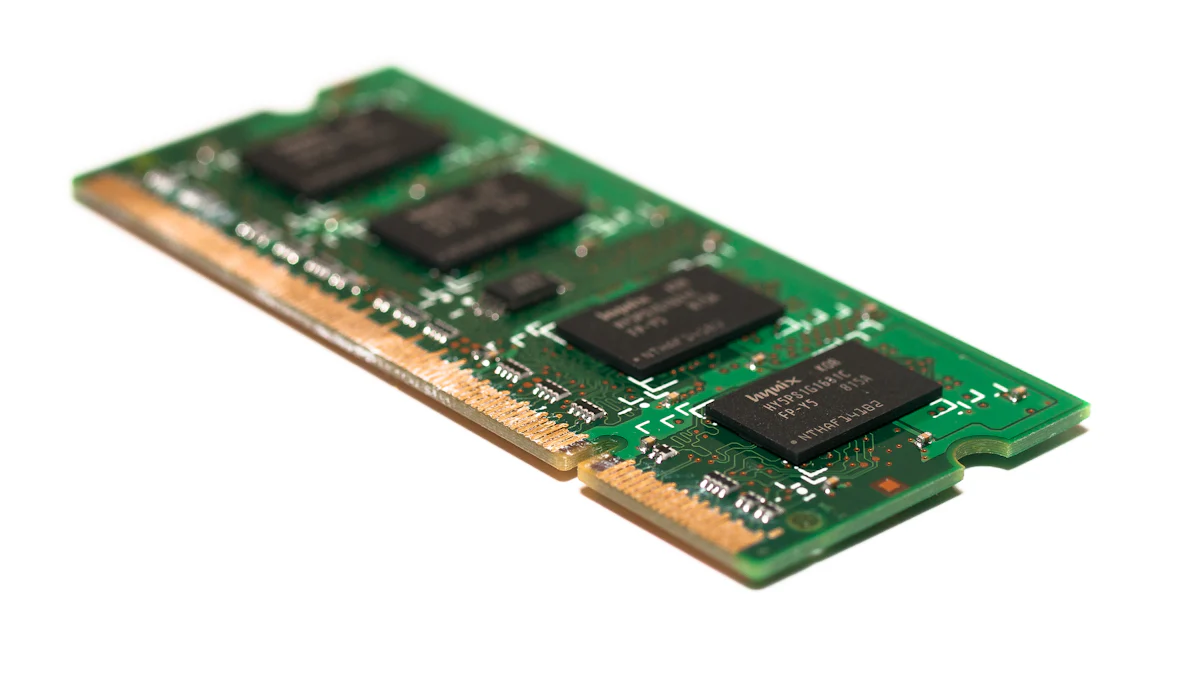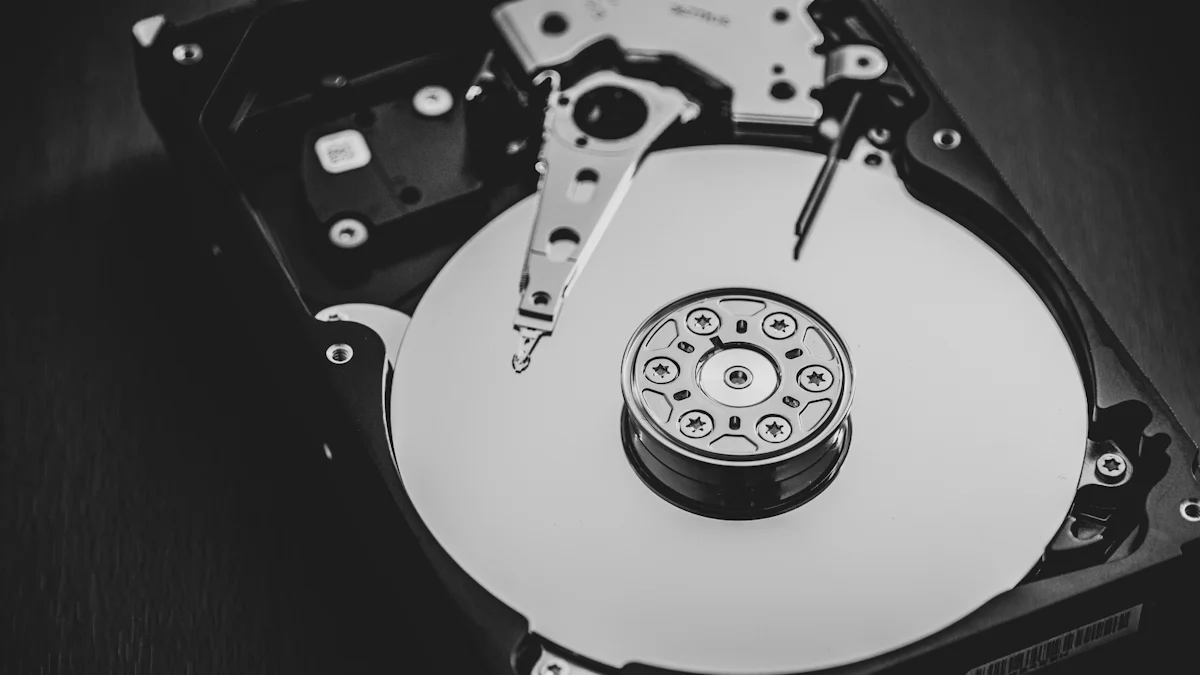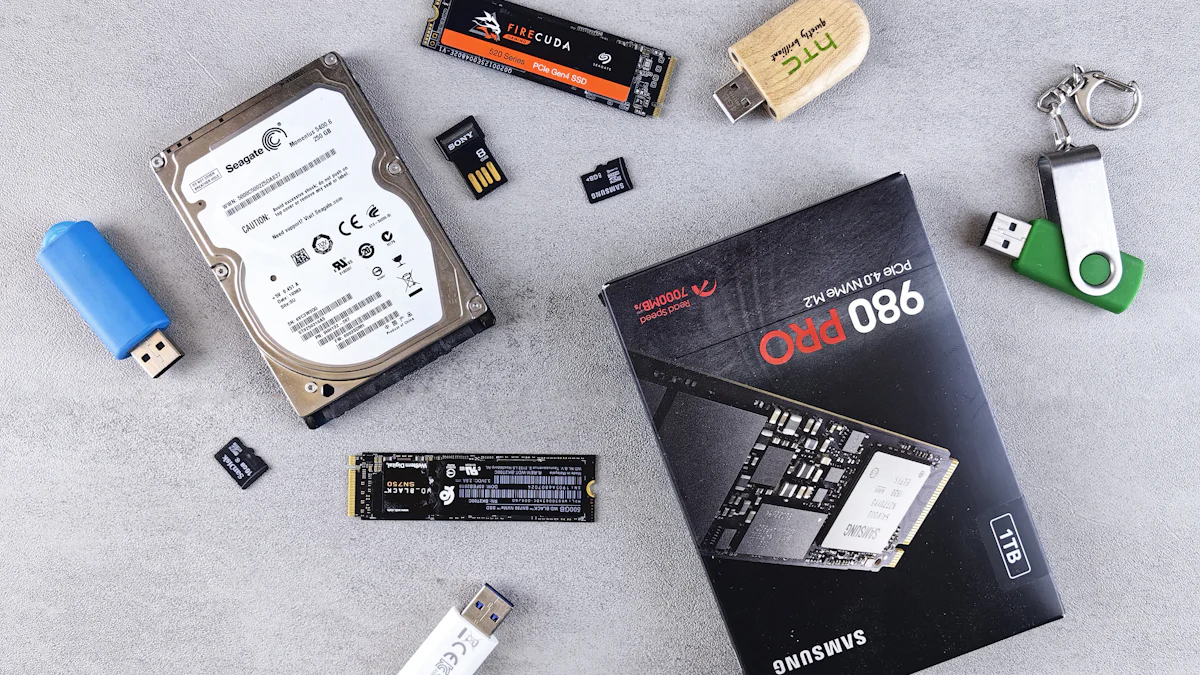


Storage plays a vital role in computing systems. Primary Storage, also known as main memory, serves as the computer's fast workspace. This storage type holds data and programs currently in use by the CPU. Understanding Primary Storage is crucial for optimizing system performance. Primary Storage offers faster access times compared to secondary storage options. This speed is essential for efficient data processing and multitasking. The rapid evolution of technology demands a keen understanding of storage solutions to meet modern computing needs.
Understanding Primary Storage
Definition of Primary Storage
Primary Storage serves as the main memory in computing systems. It stores data, programs, and instructions that the CPU actively uses. This storage type provides quick access to essential information, enabling efficient processing.
Characteristics of Primary Storage
Primary Storage exhibits several key characteristics. It offers high-speed data access, which enhances system performance. The memory is volatile, meaning it loses stored data when the power is off. This storage type directly interfaces with the CPU, ensuring rapid data retrieval.
Role in Computing
Primary Storage plays a crucial role in computing tasks. It holds the operating system and active applications, allowing seamless operation. The memory supports multitasking by managing multiple processes simultaneously. Efficient data handling in Primary Storage boosts overall system speed.
Types of Primary Storage
Primary Storage encompasses various types of memory, each serving distinct functions.
RAM (Random Access Memory)
RAM acts as the main workspace for computers. It temporarily stores applications, programs, and data in use. The memory's volatile nature means it clears when the computer shuts down. RAM ensures fast read and write operations, facilitating smooth performance.
Cache Memory
Cache Memory provides a faster interactive environment by storing frequently accessed instructions. The CPU first checks the cache for needed data, reducing retrieval time. If the data is unavailable in the cache, the CPU then accesses RAM. This layered approach optimizes processing speed.
ROM (Read-Only Memory)
ROM stores data permanently, making it a reliable storage option. Unlike RAM, ROM is non-volatile and retains information without power. Users can only read data from ROM, as writing is not permitted. This memory type often contains firmware and essential system instructions.
Primary Storage vs. Secondary Storage

Key Differences
Speed and Accessibility
Primary storage offers rapid data access. The CPU directly interacts with primary storage. This interaction ensures quick retrieval of data. Secondary storage operates at a slower pace. The CPU does not directly access secondary storage. Data retrieval from secondary storage takes more time.
Volatility
Primary storage is volatile. Data in primary storage disappears when power is off. Secondary storage is nonvolatile. Data remains intact in secondary storage without power.
Use Cases
When to Use Primary Storage
Use primary storage for tasks requiring speed. Primary storage suits applications in active use. Real-time data processing benefits from primary storage. Multitasking relies on the efficiency of primary storage.
When to Use Secondary Storage
Secondary storage is ideal for long-term data retention. Use secondary storage for backups and archives. Large files find a home in secondary storage. Secondary storage supports data that does not need immediate access.
Importance of Primary Storage
Speed and Performance
Impact on System Efficiency
Primary Storage significantly impacts system efficiency. The CPU accesses data directly from Primary Storage, which reduces wait times. This direct access speeds up data retrieval and processing. Fast data access enhances the overall performance of computing systems. Users experience quicker response times when using applications. A system with efficient Primary Storage performs tasks more swiftly.
Role in Multitasking
Multitasking relies heavily on Primary Storage. Multiple applications run simultaneously in a computing environment. Primary Storage manages these applications by holding active data and instructions. Efficient Primary Storage allows seamless switching between tasks. Users can open several programs without experiencing delays. A robust Primary Storage system supports smooth multitasking operations.
Data Processing
Real-time Data Access
Real-time data access is crucial for modern computing tasks. Primary Storage facilitates this by providing immediate access to active data. The CPU retrieves necessary information without delay. Real-time access is vital for applications requiring instant data processing. Users benefit from real-time updates and interactions. Primary Storage ensures that data is readily available for immediate use.
Support for Applications
Applications require reliable data storage for optimal performance. Primary Storage supports applications by storing essential data and instructions. The CPU accesses this data quickly, enabling efficient application operation. Users notice improved application speed and functionality. Primary Storage plays a pivotal role in supporting diverse software needs. Efficient Primary Storage enhances user experiences across various applications.
Examples of Primary Storage in Use

In Personal Computers
RAM and Cache Utilization
Personal computers rely heavily on Primary Storage for efficient operation. RAM serves as the main workspace for active applications. Users experience faster load times due to RAM's speed. Cache memory enhances this by storing frequently accessed data. The CPU checks the cache first, reducing retrieval time. This layered approach optimizes processing speed in personal computers.
Impact on User Experience
Primary Storage significantly impacts user experience. Fast data access leads to smoother application performance. Users notice quicker response times when opening files or programs. Multitasking becomes seamless with efficient Primary Storage. Switching between applications feels fluid and uninterrupted. A robust Primary Storage system enhances overall user satisfaction.
In Enterprise Systems
High-Performance Computing
Enterprise systems demand high-performance computing capabilities. Primary Storage plays a crucial role in meeting these demands. RAM and cache memory support complex computations and data analysis. Enterprises benefit from faster processing speeds and reduced latency. Efficient Primary Storage enables real-time data processing. Businesses achieve higher productivity with optimized computing resources.
Data Centers
Data centers utilize Primary Storage to manage vast amounts of information. RAM provides quick access to critical data and applications. Cache memory reduces the load on main storage by storing frequently used data. Data centers experience improved efficiency with this setup. Primary Storage ensures reliable performance under heavy workloads. Enterprises rely on Primary Storage for scalable and efficient data management.
Applications of Primary Storage
In Gaming
Enhancing Game Performance
Primary Storage plays a crucial role in gaming. Gamers demand quick responses and smooth gameplay. RAM provides the necessary speed for game data processing. Cache memory stores frequently accessed game instructions. This setup reduces lag and enhances overall performance. Gamers enjoy seamless experiences with efficient Primary Storage.
Reducing Load Times
Load times impact gaming experiences significantly. Primary Storage minimizes these delays. RAM loads game assets quickly, reducing wait times. Cache memory further speeds up data retrieval. Gamers access game levels faster with optimized Primary Storage. Quick load times improve satisfaction and engagement in gaming.
In Business Operations
Supporting Business Applications
Businesses rely on efficient data processing. Primary Storage supports this need effectively. RAM holds active business applications and data. Cache memory ensures rapid access to essential information. Businesses experience improved application performance. Efficient Primary Storage enhances productivity in business environments.
Improving Workflow Efficiency
Workflow efficiency is vital for business success. Primary Storage contributes to smoother operations. RAM facilitates multitasking by managing multiple processes. Cache memory reduces data retrieval times. Employees switch between tasks without delays. Businesses achieve higher efficiency with robust Primary Storage systems.
Benefits of Primary Storage
Enhanced System Performance
Faster Data Access
Primary Storage provides rapid data access. The CPU interacts directly with Primary Storage, reducing wait times. This direct interaction speeds up data retrieval. Users experience quicker response times with applications. Fast data access enhances overall system performance.
Improved Processing Speed
Primary Storage significantly boosts processing speed. The CPU processes tasks more efficiently with quick data access. Users notice faster execution of commands and operations. Improved processing speed supports demanding applications. A robust Primary Storage system ensures smooth computing experiences.
Reliability and Stability
Consistent Performance
Primary Storage offers consistent performance in computing systems. The memory handles active data and instructions reliably. Users enjoy stable application operation without interruptions. Consistent performance supports multitasking and complex tasks. Reliable Primary Storage contributes to a seamless user experience.
Reduced System Crashes
Primary Storage reduces the likelihood of system crashes. Efficient data handling prevents overloads and errors. Users face fewer disruptions during computing activities. Reduced system crashes enhance productivity and satisfaction. A dependable Primary Storage system ensures continuous operation.
Future of Primary Storage
Technological Advancements
Emerging Trends
The future of primary storage promises exciting developments. Engineers constantly push the boundaries of storage technology. New materials and methods enhance memory speed and capacity. The shift from traditional disk drives to solid-state drives (SSDs) marks a significant trend. SSDs offer faster data access and increased durability. The gaming industry benefits from these advancements. Hard drives in gaming consoles improve performance and user experience.
Innovations in Storage Technology
Innovations in storage technology continue to emerge. Researchers explore quantum computing for potential breakthroughs. Quantum bits, or qubits, promise faster processing speeds. Optical storage media present another area of innovation. These media improve upon traditional disk drives. Optical storage offers higher capacities and faster data retrieval. The evolution of floppy disks to optical media highlights progress. Each step forward increases storage efficiency and reliability.
Impact on Computing
Future Applications
Future applications of primary storage will transform computing. Faster storage enables more complex software development. Developers create applications with enhanced features and capabilities. High-performance computing becomes more accessible. Businesses leverage advanced storage for data analysis and decision-making. Real-time data processing becomes the norm across industries. Users experience seamless interactions with technology.
Potential Challenges
Potential challenges accompany advancements in primary storage. Data security remains a top concern. Enhanced storage capabilities require robust security measures. Protecting sensitive information becomes increasingly important. Compatibility issues may arise with new storage technologies. Older systems struggle to integrate with cutting-edge solutions. Cost considerations impact widespread adoption. Balancing innovation with affordability presents a challenge for developers.
Primary storage plays a crucial role in computer processing. The memory maintains data and instructions that the CPU actively uses. This direct interaction ensures fast and efficient operations. Primary storage significantly enhances system performance. The speed and accessibility of primary storage make it indispensable for modern computing. System designers should prioritize primary storage to optimize performance. Efficient primary storage supports multitasking and real-time data processing. Consider the benefits of primary storage when designing or upgrading systems. A robust primary storage setup ensures a seamless computing experience.
FAQ
Primary storage holds data and programs that the CPU actively uses. This storage type provides quick access to essential information. Fast data retrieval enhances system performance.
Primary storage connects directly to the CPU. This connection allows rapid data access. Secondary storage requires additional steps for data retrieval. These steps slow down the process.
Yes, primary storage is volatile. Data disappears when power is off. RAM is a common example of volatile primary storage. ROM, however, is non-volatile and retains data without power.
Multitasking relies on primary storage. The memory manages active applications and data. Efficient primary storage allows smooth task switching. Users experience seamless multitasking with robust primary storage.
Primary storage includes several types of memory. RAM, cache memory, and ROM are key examples. Each type serves different functions within computing systems.
Gaming demands quick data processing. Primary storage provides the necessary speed. RAM and cache memory reduce lag and load times. Gamers enjoy smoother gameplay with efficient primary storage.
Yes, upgrading primary storage is possible. Increasing RAM can enhance system performance. Users should check compatibility before upgrading. Proper upgrades improve speed and efficiency.
Data centers rely on primary storage for efficiency. RAM provides quick access to critical data. Cache memory reduces the load on main storage. This setup ensures reliable performance under heavy workloads.
Business applications require fast data access. Primary storage holds active applications and data. Efficient primary storage improves application performance. Businesses experience enhanced productivity with robust primary storage systems.
Emerging trends promise faster and more durable storage. Solid-state drives (SSDs) offer significant improvements. Quantum computing and optical storage present potential breakthroughs. These advancements will transform computing experiences.
Continue Reading About Primary Storage
2025 Best Data Integration Solutions and Selection Guide
Explore top data integration solutions for 2025, enhancing data management and operational efficiency with leading platforms like Fivetran and Talend.
Howard
Dec 19, 2024
Best Data Integration Platforms to Use in 2025
Explore the best data integration platforms for 2025, including cloud-based, on-premises, and hybrid solutions. Learn about key features, benefits, and top players.
Howard
Jun 20, 2024
Best Data Integration Vendors for Seamless Workflows
Discover the top 20 data integration vendors of 2025 for seamless workflows. Compare tools like Talend, AWS Glue, and Fivetran to optimize your data processes.
Howard
Jan 22, 2025
Customer Data Integration: A Comprehensive Guide
Master customer data integration to enhance business operations by combining data from multiple sources for a comprehensive customer view.
Howard
Sep 07, 2024
Enterprise Data Integration: A Comprehensive Guide
Explore enterprise data integration with this comprehensive guide. Learn the benefits of enterprise data integration and the best practices.
Howard
Jul 10, 2024
Mastering Data Integration Engineering: A Comprehensive Guide
Explore the path to becoming a Data Integration Engineer, from key skills and education to career advancement and related roles.
Howard
Oct 28, 2024


